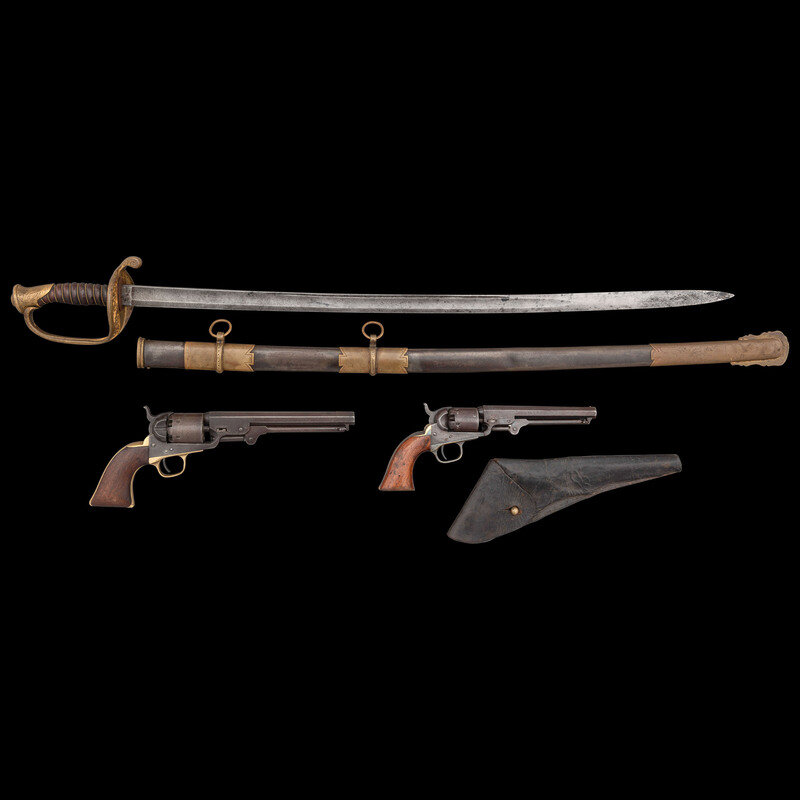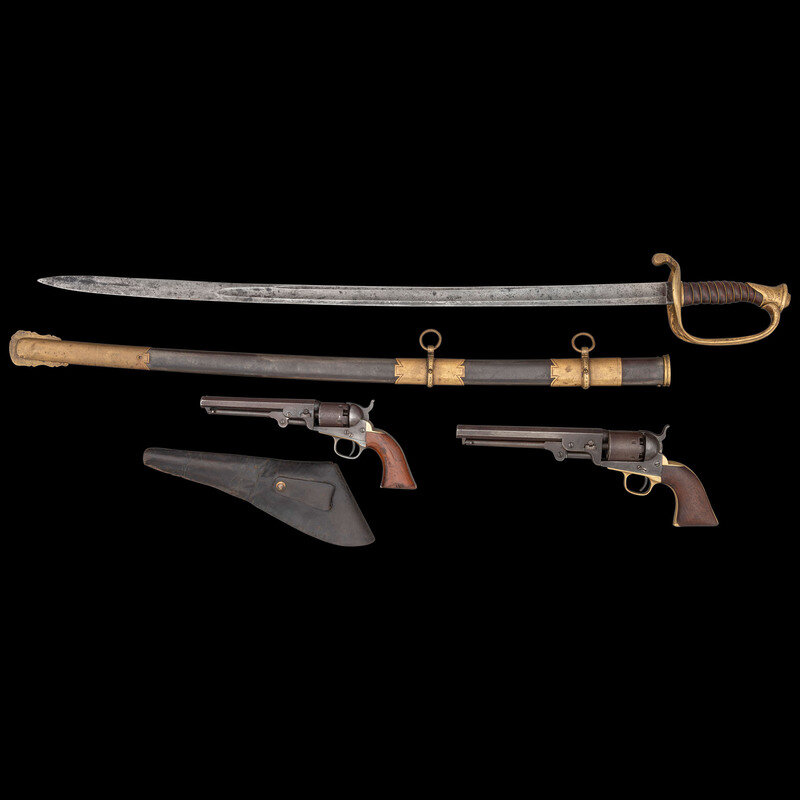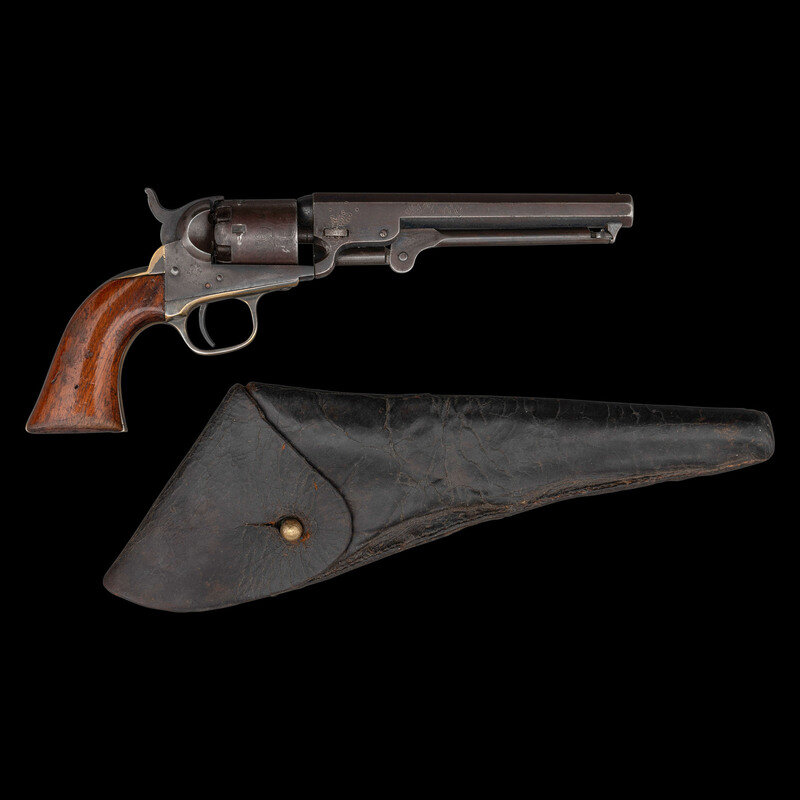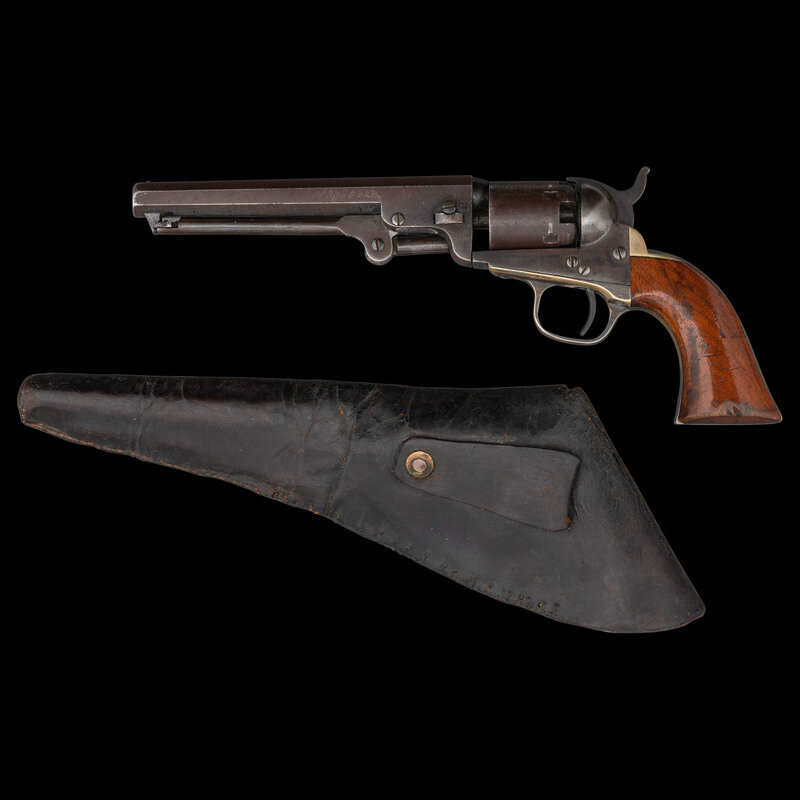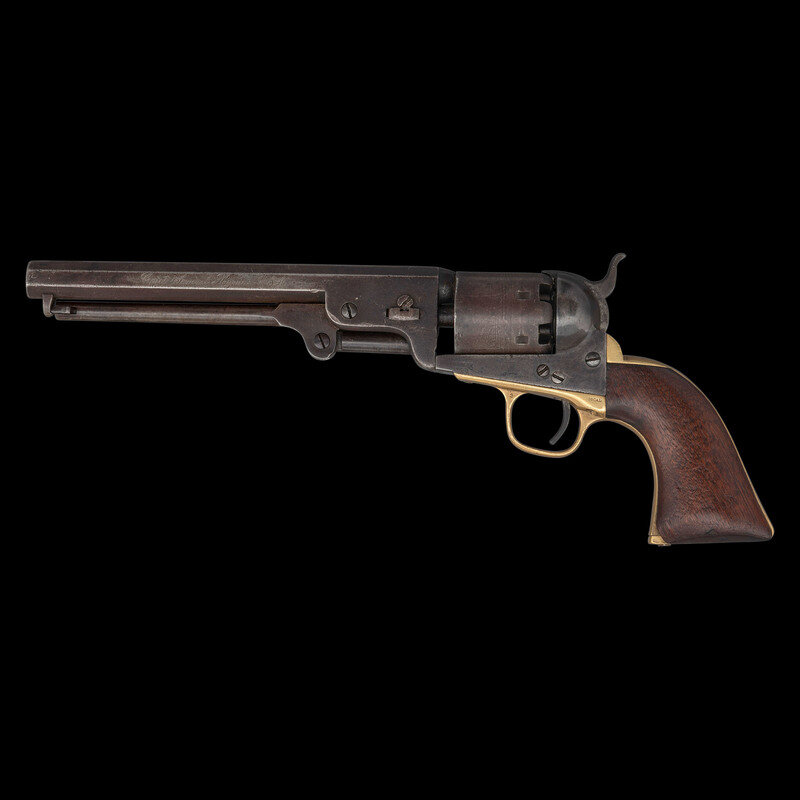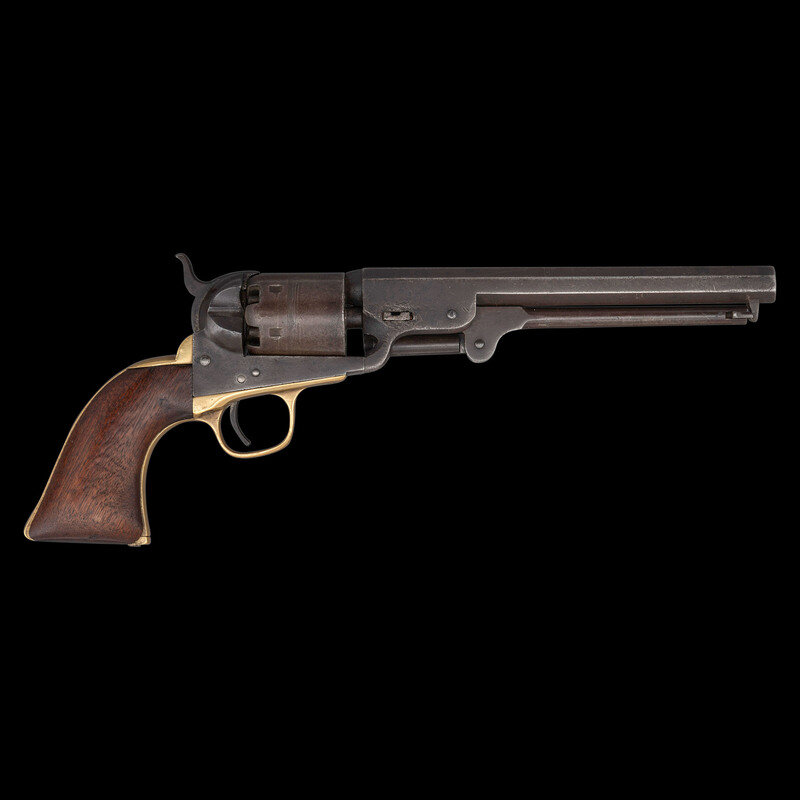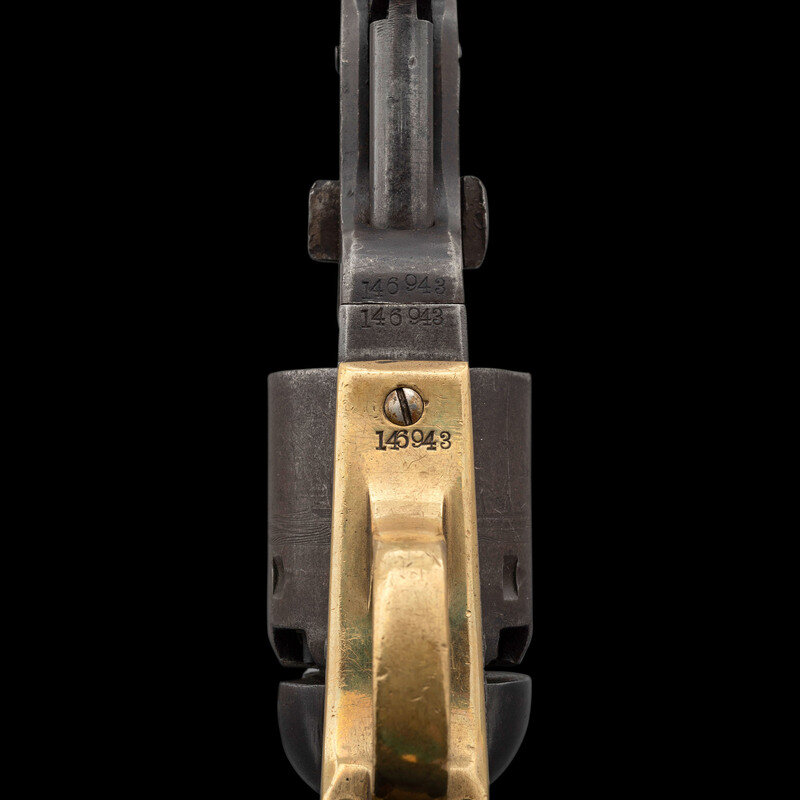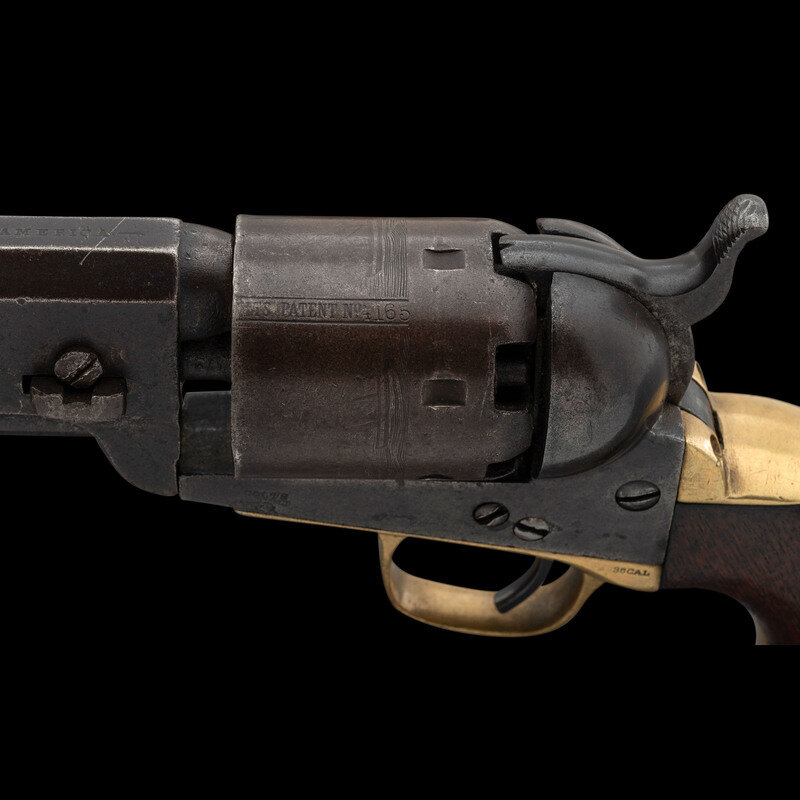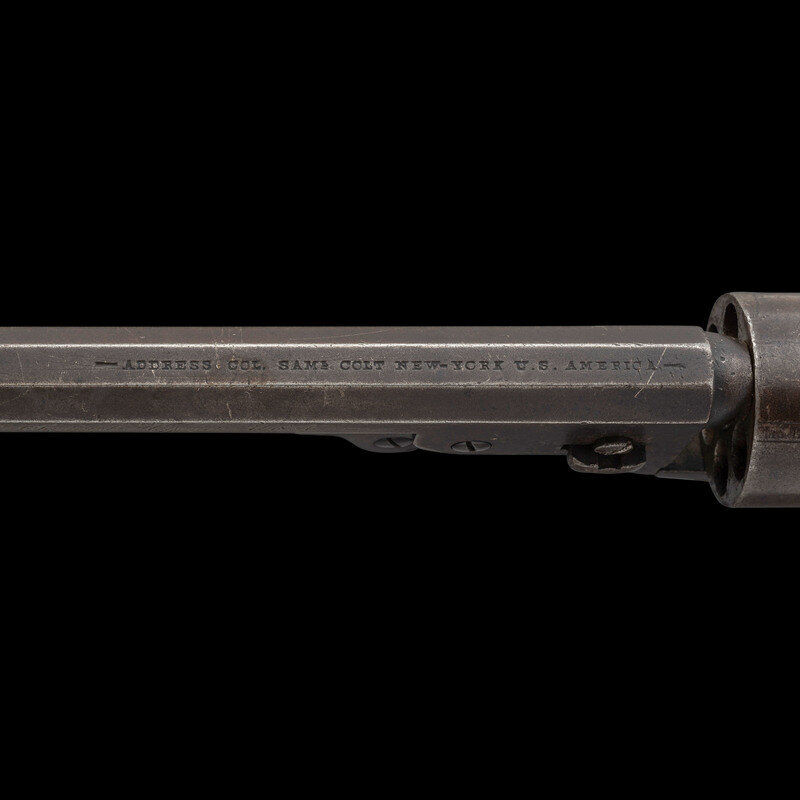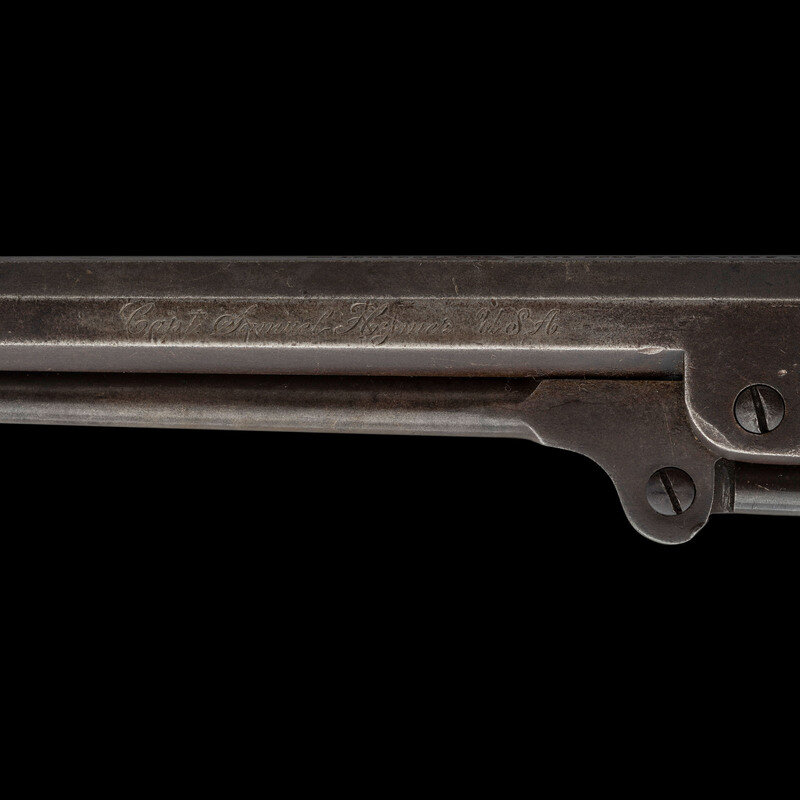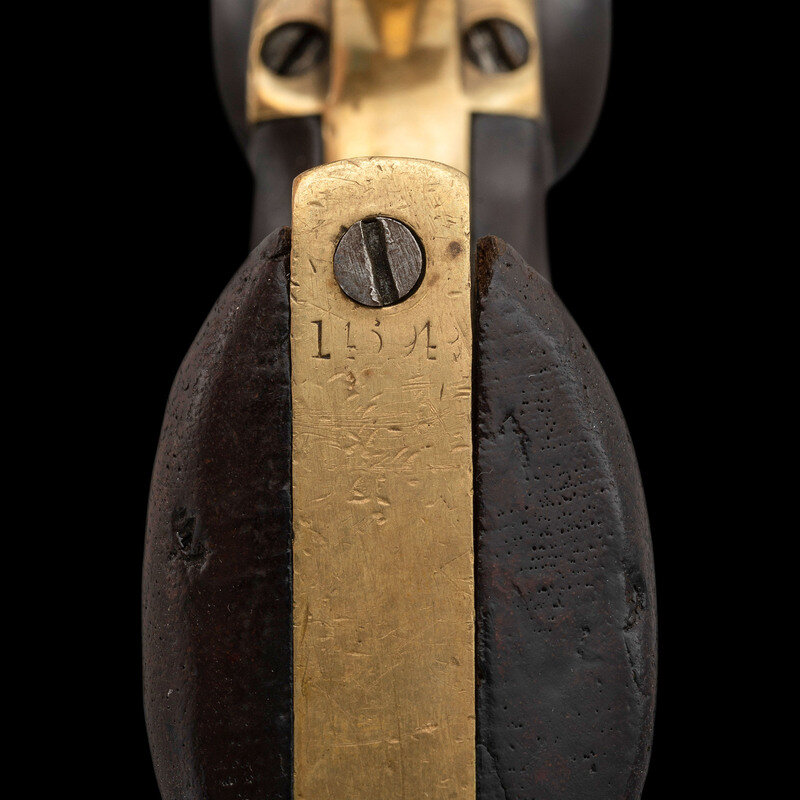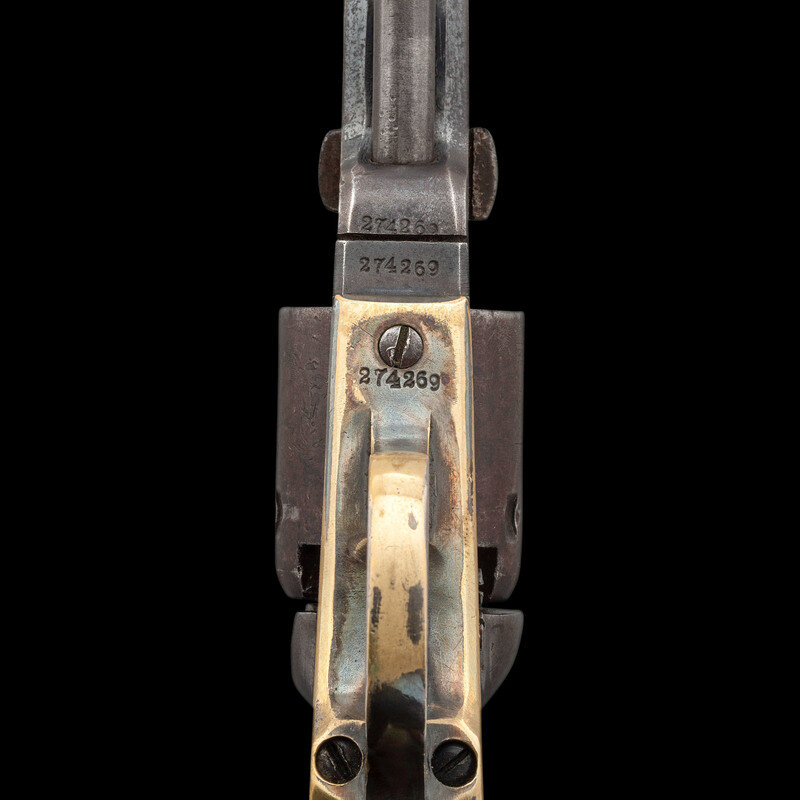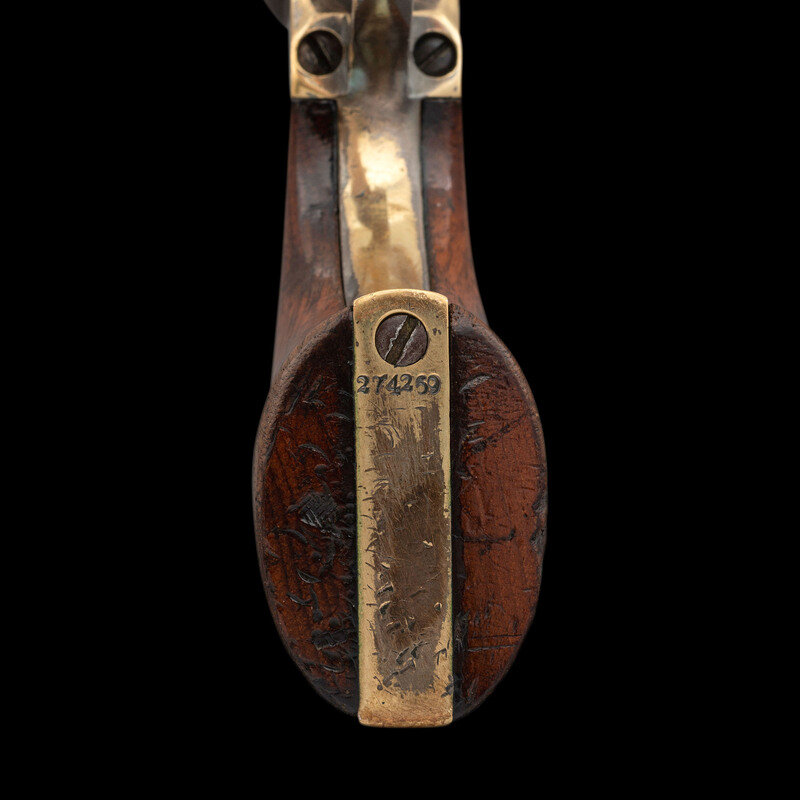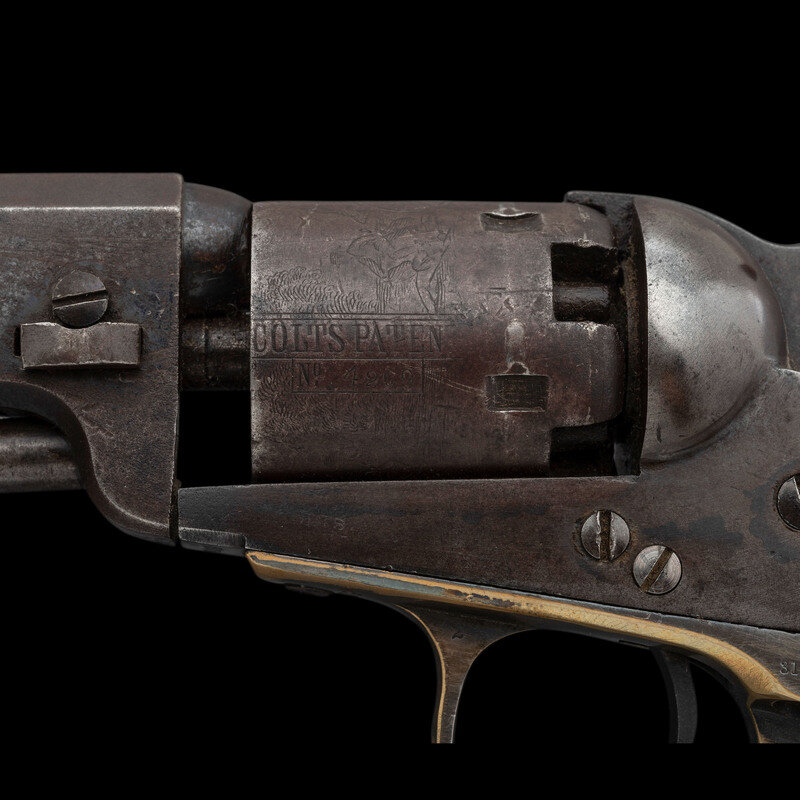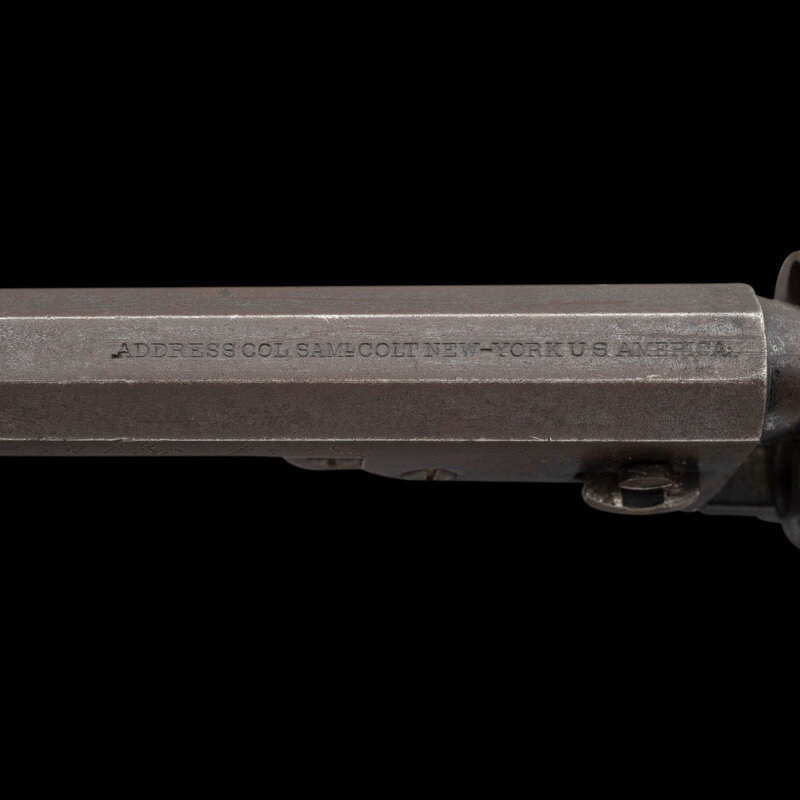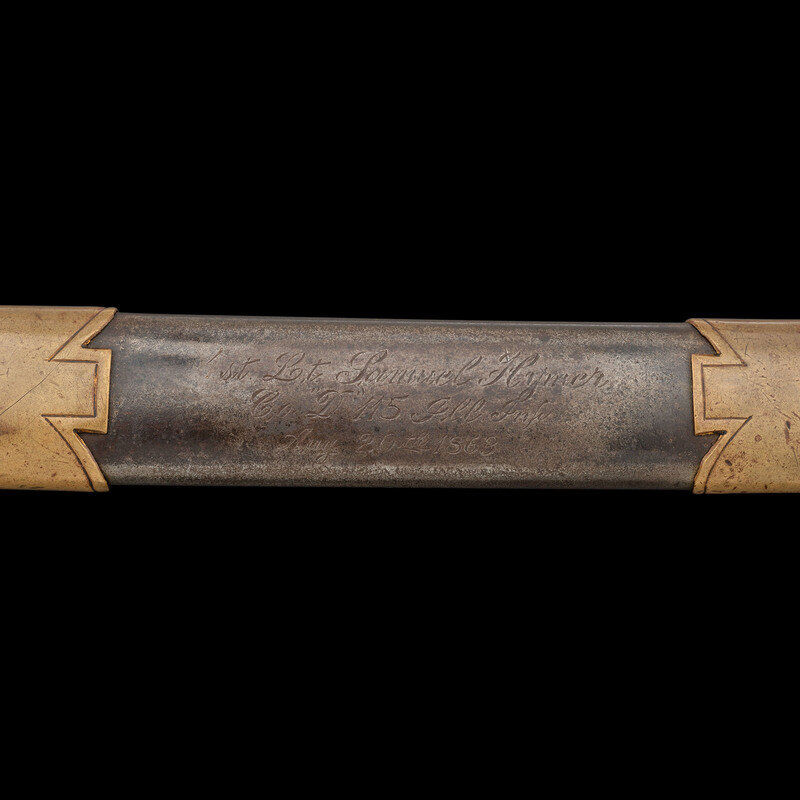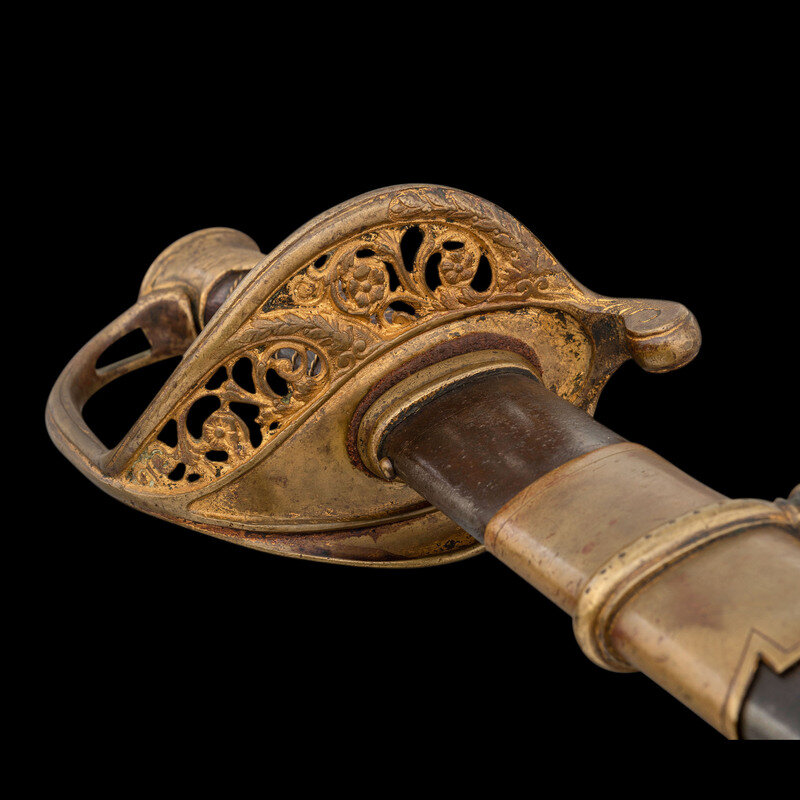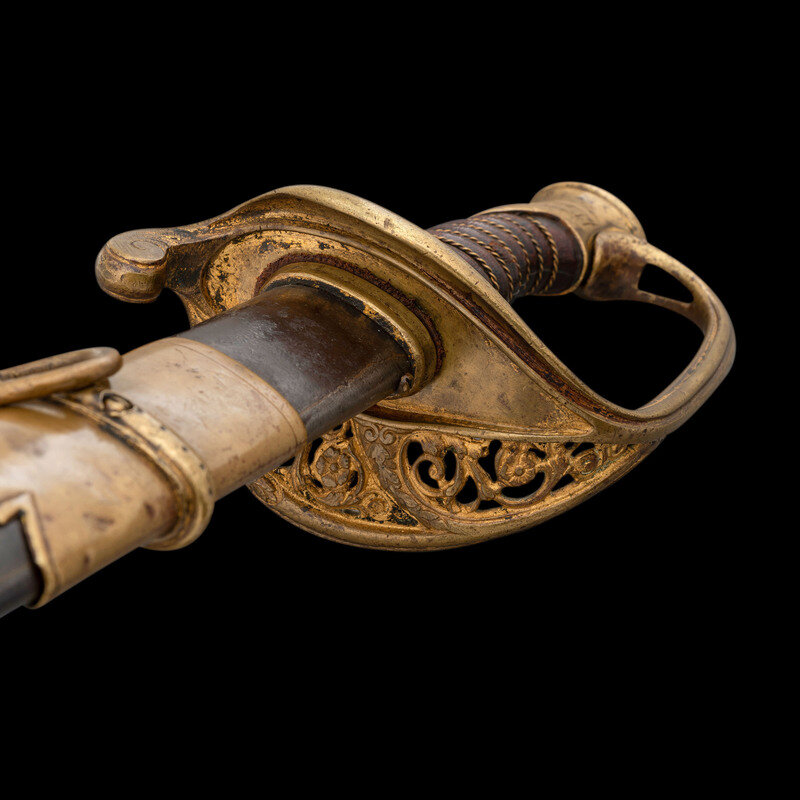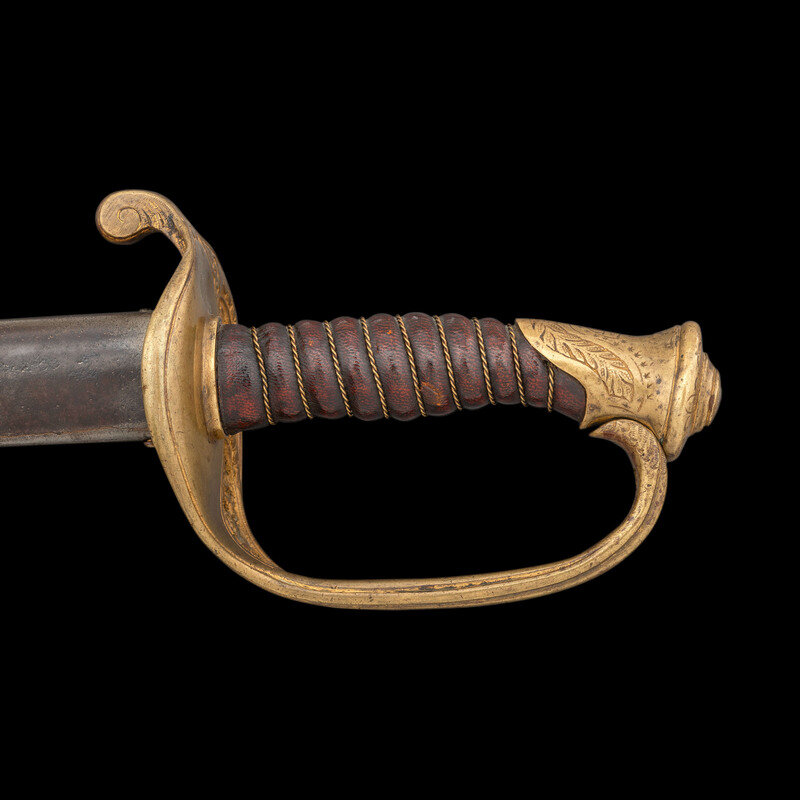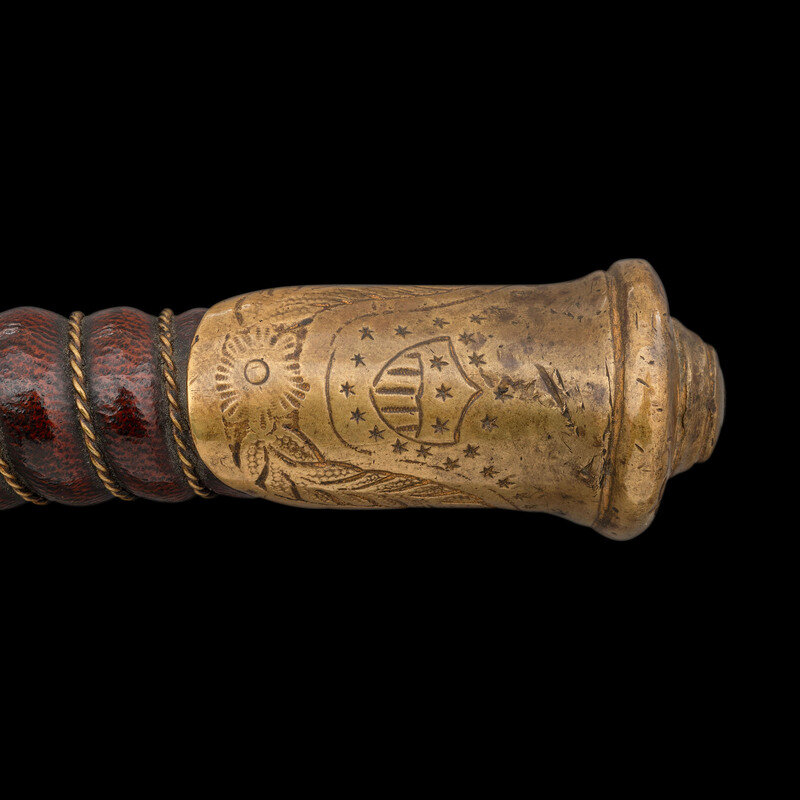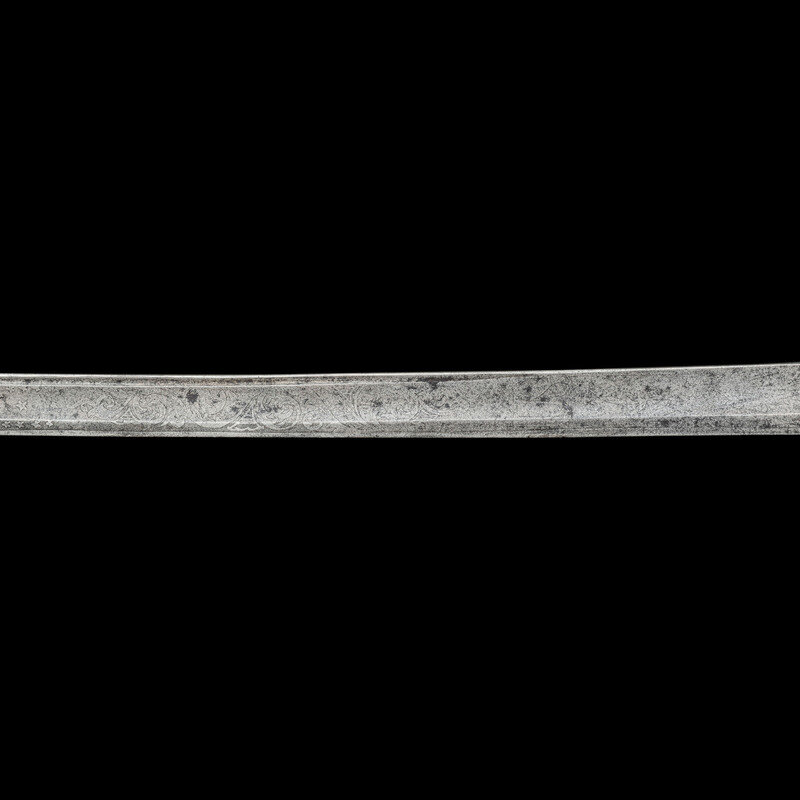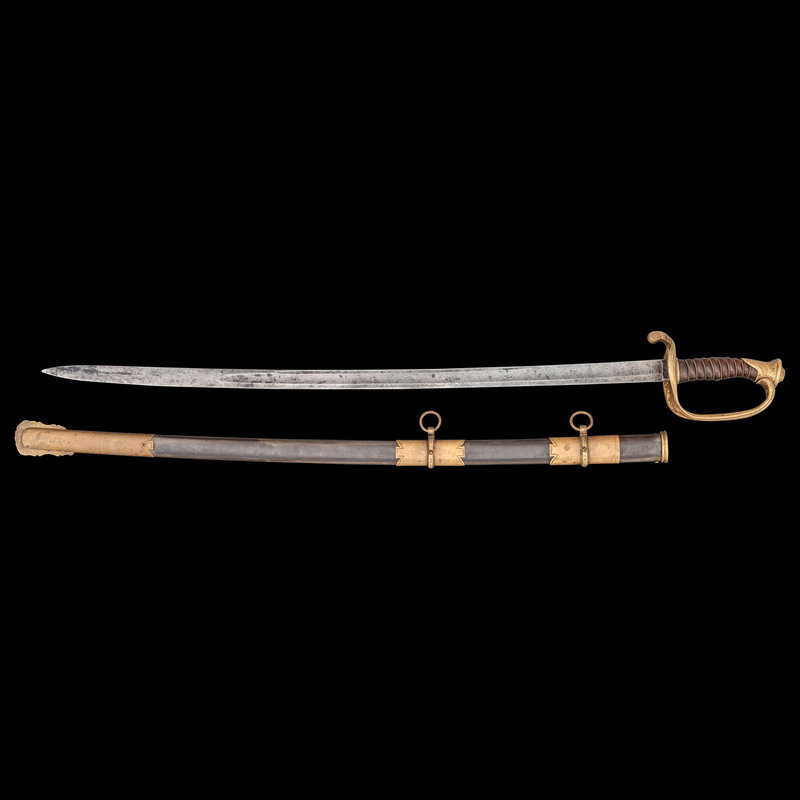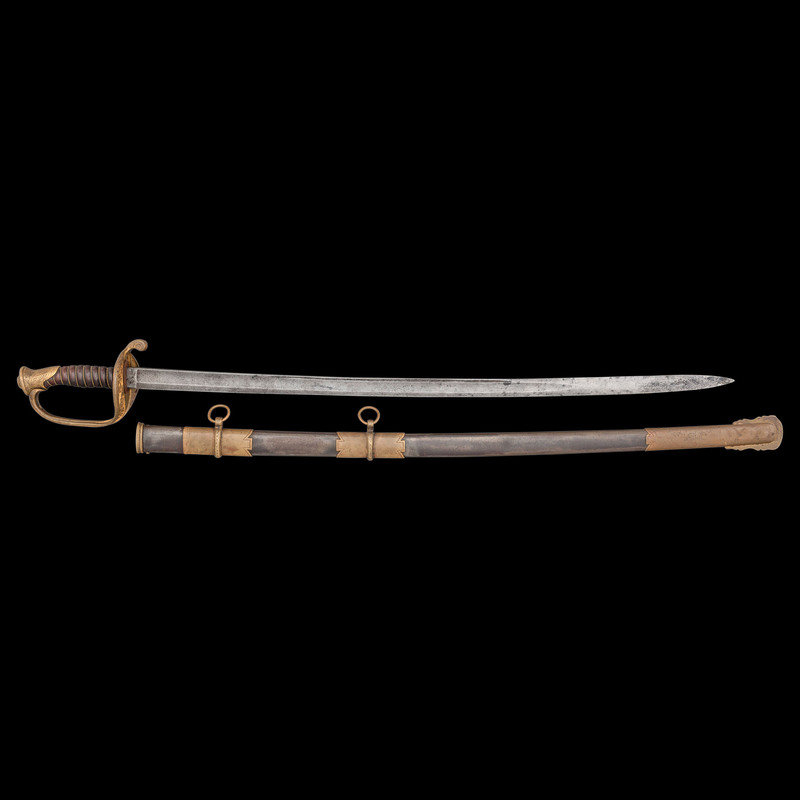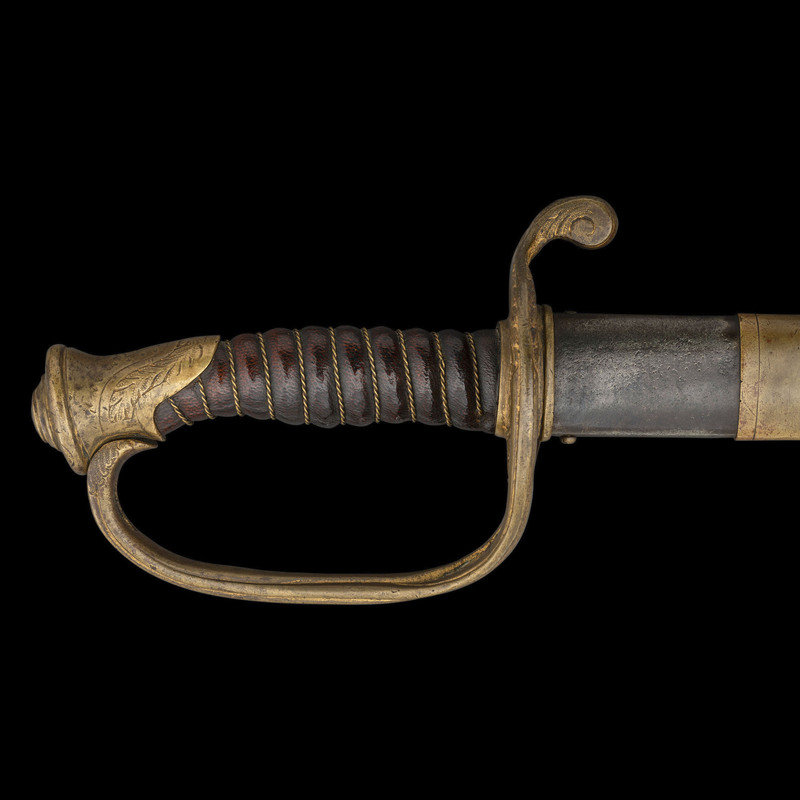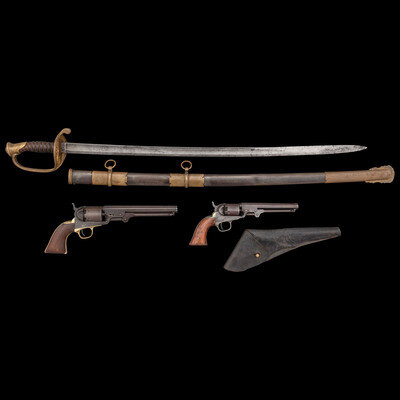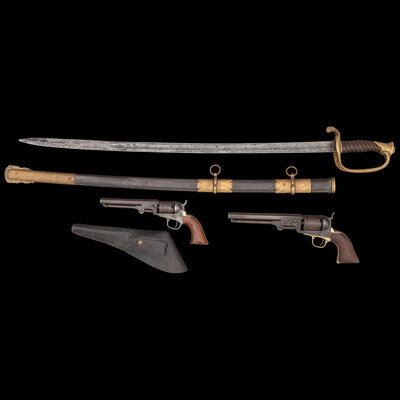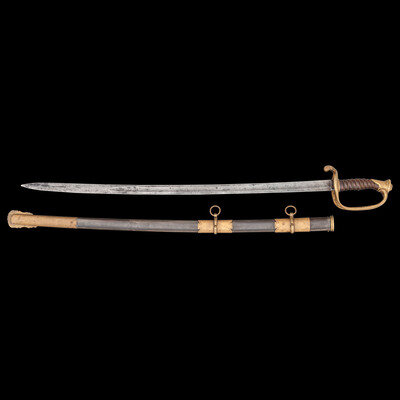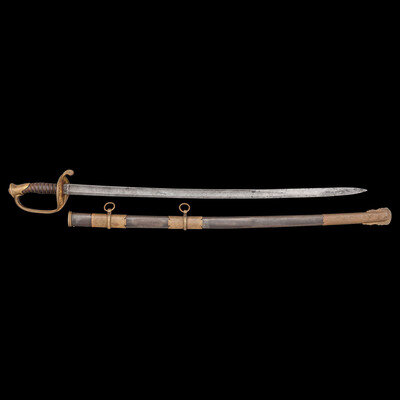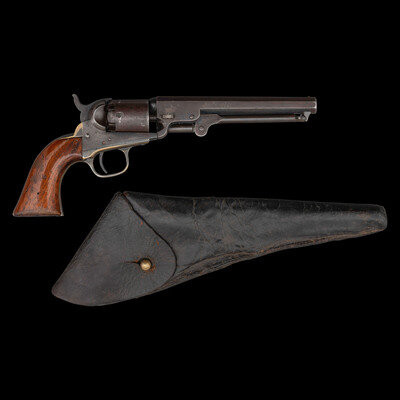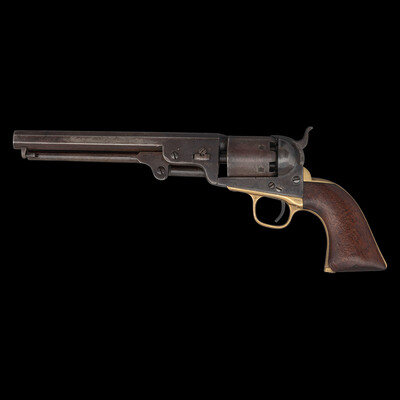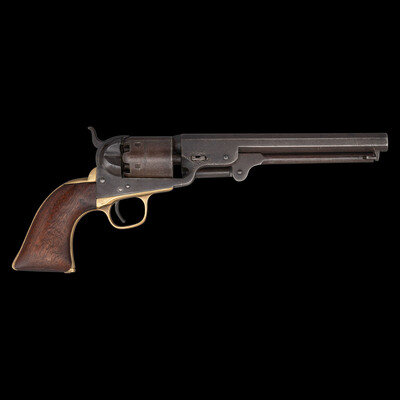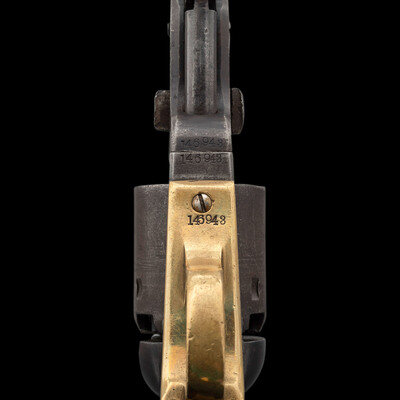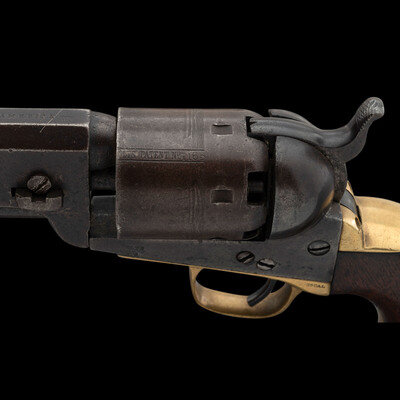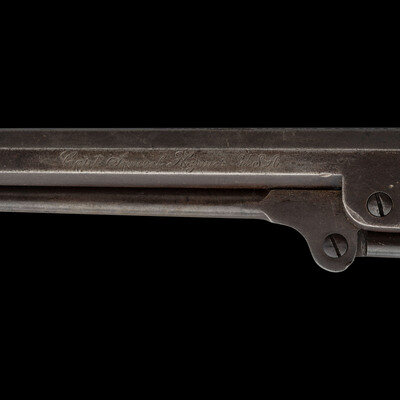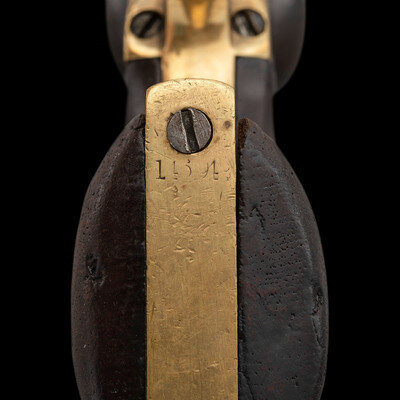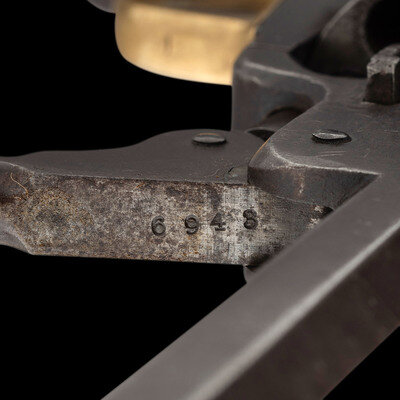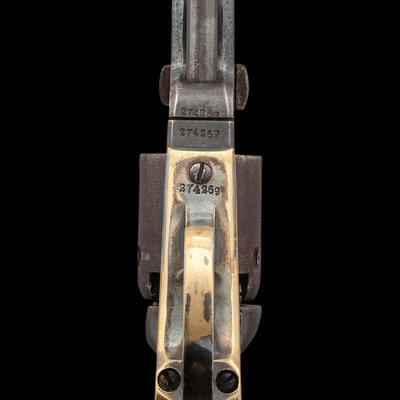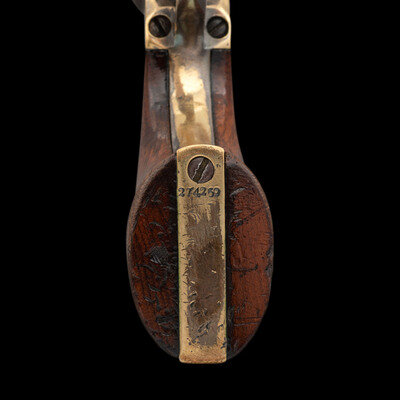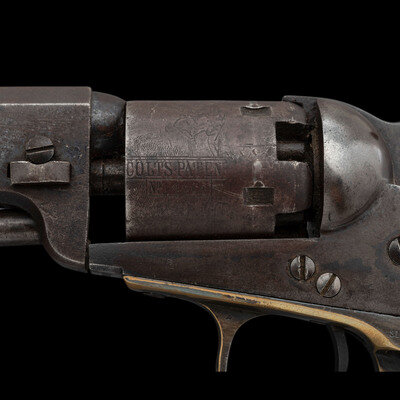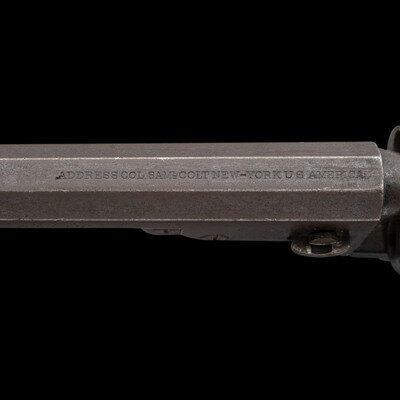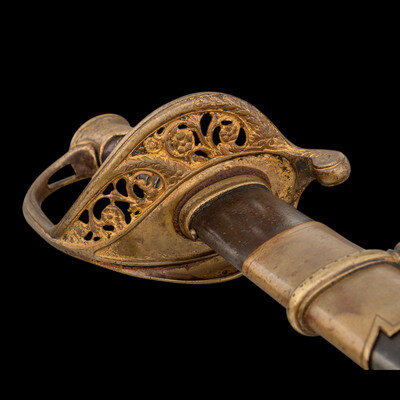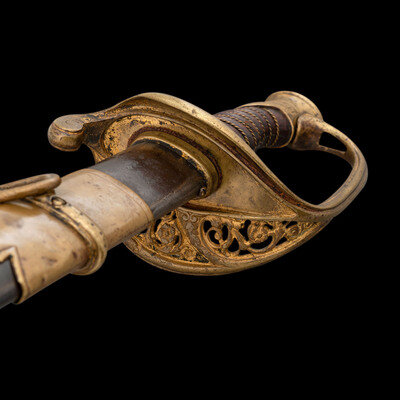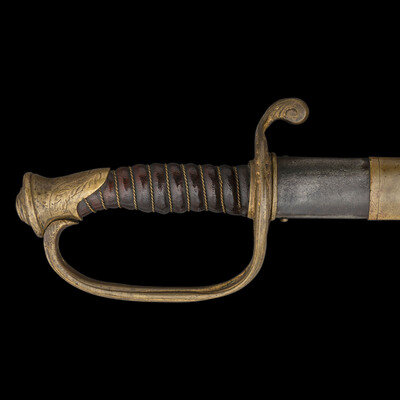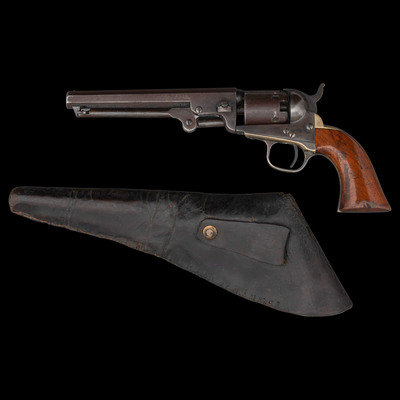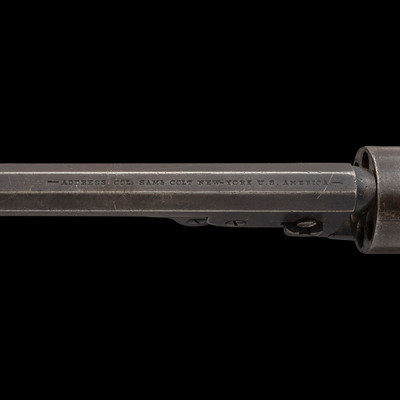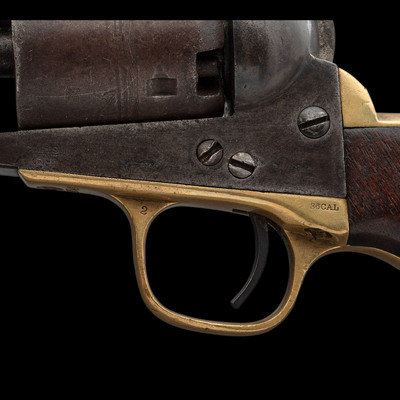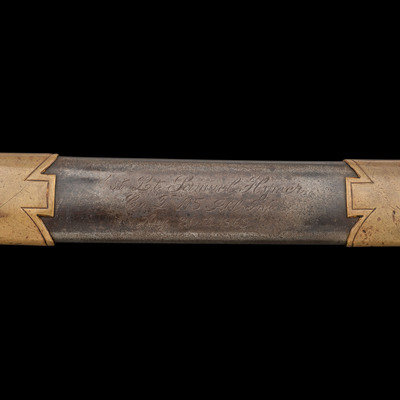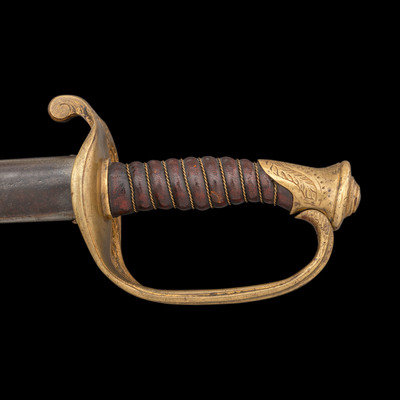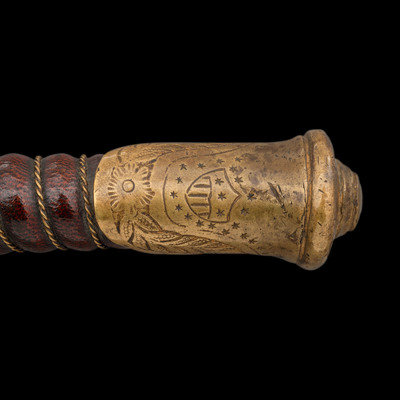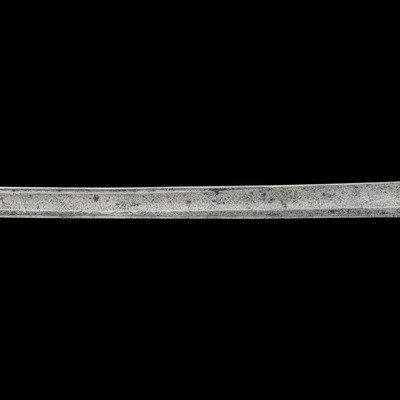Condition Report
Contact Information
Auction Specialists
Lot 22
Lot Description
1.) Colt 1851 Navy Revolver: .36 caliber. 7.5" octagonal barrel. SN: 146943 (Mfg. ca.1863). Blued and color casehardened finish, silver plated brass backstrap and triggerguard, one piece walnut grip. One line New York barrel address, standard frame marking and 36 CAL mark on triggerguard web. Visible serial numbers match, with the exception of the cylinder which is numbered with the four digits 4165. Wedge renumbered in matching dies to the rest of the gun 746943 over three or four other numbers and appears to be a simple error. Standard hammer notch rear sight with German silver blade front sight. Left side of barrel engraved in a period hand: Capt. Samuel Hymer U.S.A.
2.) Colt 1849 Pocket Revolver: .31 caliber. 6" octagonal barrel. SN: 274269 (mfg. ca1865). Blued and color casehardened finish, silver plated brass backstrap and triggerguard, one piece varnished walnut grip. One line New York barrel address, standard frame marking and 31 CAL mark on triggerguard web. Visible serial numbers match, including the wedge. Standard hammer notch rear sight and brass post front sight. Backstrap of revolver engraved in a period hand: Capt. Samuel Hymer/Co "D" 115 Ill. Inf. The revolver is accompanied by a period leather flap holster.
3.) Imported Foot Officer's Sword: 30.125" slightly curved, singled-edged spear point blade, 1" wide at ricasso with a 21.125" stopped median fuller and a 13.5" narrow fuller at the spine. 36" in overall length with a gilt cast brass guard and a 5.5" hilt with grooved wood grip covered in leather with ten wraps of twisted brass wire. Blade etched with marital and patriotic themes, panoplies of arms and foliate patterns. No maker mark is present. Pommel cap decorated with the Shield of Columbia and stars. Brass mounted, lap seamed browned steel scabbard is engraved between the suspension mounts on the obverse: 1st Lt. Samuel Hymer/Co "D" 115 Ill. Inf./Aug. 20th, 1863.
Samuel Hymer (1829-1906) was a 33 year old preacher from Bainbridge, IL when he was commissioned a 2nd lieutenant into Company D of the 115th Illinois Volunteer Infantry on September 13, 1862. The company had actually been raised by the local circuit riding Methodist minister, Reverend Stephen M. Huckstep, and upon Huckstep's mortal wounding at Chickamauga on September 20, 1863 Hymer would succeed to the command of the company, being promoted to captain on December 9, 1863. The 115th Illinois would serve in nearly all of the major battles and campaigns of the Army of the Tennessee from the fall of 1862 through the end of the war, starting with the Tullahoma Campaign and ending with the Battle of Nashville. During their service they fought at Chickamuaga, the Chattanooga Campaign, the Atlanta Campaign (including the battles of Resacca, Dallas, New Hope Church, Altoona, Kennesaw Mountain, Atlanta, Jonesborough, Lovejoy's Station and Buzzard Roost Gap) and would the be at the Battle of Franklin and subsequently Nashville. It was at the Battle of Buzzard's Roost Gap that Hymer would earn the Congressional Medal of Honor, while in command of a single company who was charged to hold a blockhouse that controlled a bridge between Tunnel Hill and Dalton, GA. The fighting was furious and the small contingent of Union soldiers managed to hold off a tremendously larger Confederate force for some ten hours before being forced to surrender.
Hymer's Medal of Honor citation for his actions that day reads: "With only 41 men under his command, defended and held a blockhouse against the attack of Hood's Division for nearly 10 hours, thus checking the advance of the enemy and insuring the safety of the balance of the regiment as well as the 8th Kentucky Infantry, then stationed at Ringgold, GA." Hymer and the balance of his surviving men finally surrendered and those who were ambulatory were sent to prisoner of war camps, including the notorious Andersonville. Hymer and his lieutenant were separated from the enlisted men and were initially confined at Camp Sorghum near Columbia, SC and were later transferred to Charlotte, NC as Sherman's army approached Columbia. Eventually Hymer and his surviving men were exchanged prior to the conclusion of the war. In addition to the Medal of Honor, Hymer was breveted to the rank of Major or his heroics at Buzzard's Roost. Hymer later went on to have a successful career as a Kansas legislator, was active in the GAR, and a member of the Odd Fellows after the war. He died of stomach cancer in 1906.
These three inscribed items of Hymer's were separated by time and consequences during the late 19th or early 20th century with the 1851 Navy and the sword being reunited by Dr. Oldenbourg during the 1980s and the Colt Pocket finding its way back to its brethren in 2018. The sword was acquired from Norm Flayderman from Catalog #109, item #45 and Dr. Oldenbourg became aware of the associated Colt Navy from a July 1987 Gun Report where a detailed article by John Hamilton was written about the gun. He subsequently acquired the gun from Mr. Hamilton. The final gun of the group, the 1849 Pocket, was acquired at auction in 2018.
The engraving on all three of the items appears to be in the same hand, suggesting all were personalized by the same engraver. From a timeline perspective, the sword is inscribed to Hymer as a 1st lieutenant, a rank he achieved on May 26, 1863. The two Colt's are inscribed to him as a captain, placing those inscriptions post his promotion to that rank on December 9, 1863. The 1851 Navy dates to that year. The 1849 Pocket dates to mid-1865. It appears that he acquired the sword in the summer of 1863 and carried it through his service and capture. The Colt 1851 was acquired soon after being promoted to company commander. Both of these items were likely taken from Hymer at the time of his capture and this explains their separation from Hymer and his family. More than likely the 1849 Pocket was acquired after his return home at the end of the war as a personal protection firearm. Since the inscription on that gun matches the hand and style of the other two items, it would be safe to assume that all were acquired or at least engraved by a local engraver in or near Hymer's hometown.
From the Collection of George Oldenbourg
